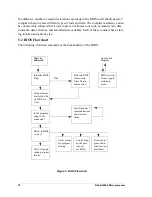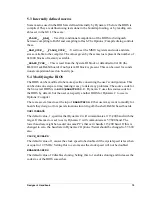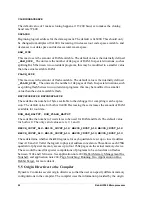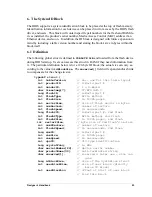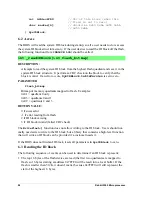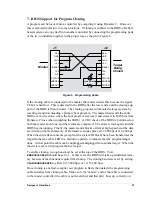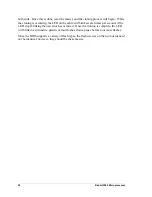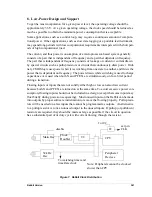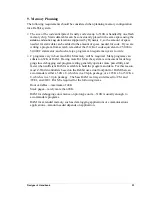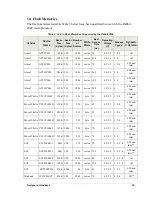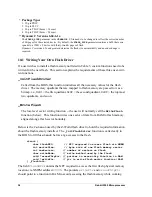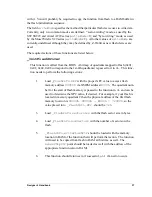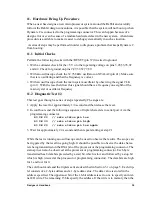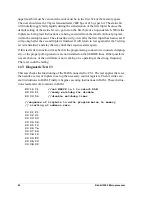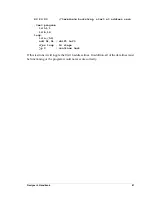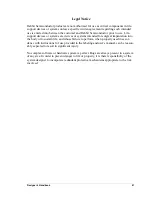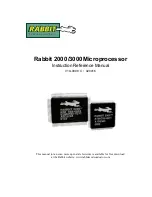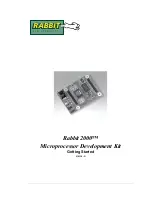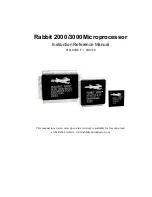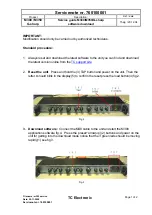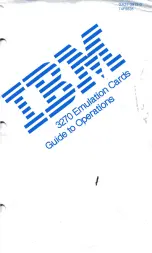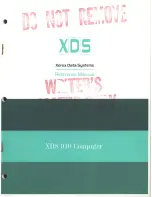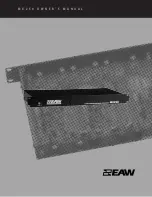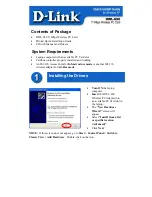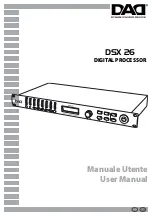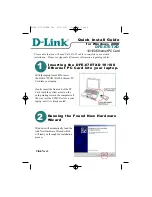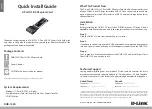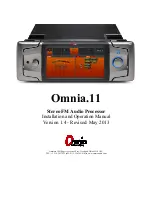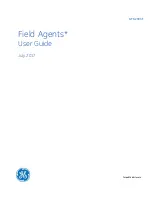
Rabbit
Version
343
tem
clock is at 32.768 kHz. The 48-bit battery backable clock continues to operate
without
interruption.
Usually
the programmer will want to reduce power consumption to a minimum, either for
a
fixed time period or until some external event takes place. On entering sleepy mode by
calling
use
32kHzOsc()
,
the periodic interrupt is completely disabled, the system clock is
switched
to 32.768 kHz, and the main oscillator is powered down. On exiting sleepy
mode
by calling use
MainOsc()
,
the main oscillator is powered up, a time delay is
inserted
to be sure that it has resumed regular oscillation, and then the system clock is
switched
back to the main oscillator. At this point the periodic interrupt is reenabled.
Data
will probably be lost if interrupt-driven communication is attempted while in sleepy
mode.
While
in sleepy mode the user has available a routine,
updateTimers()
,
that can be
called
periodically to keep Dynamic C time variables updated. These time variables keep
track
of seconds and milliseconds are normally used by Dynamic C routines to measure
time
intervals or to wait for a certain time or date. This routine reads the real-time clock
and
then computes new values for the Dynamic C time variables. The normal method of
up
dating these variables is the periodic interrupt that takes place 2048 times per second.
8.2
Baud Rates in Sleepy Mode
The
available baud rates in sleepy mode are 1024, 1024/2, 1024/3, 1024/4, etc. (The baud
rate
113.77 is available as 1024/9 and may be useful for communicating with other sys-
tems
operating at 110 bps - a 3.4% mismatch. In addition the standard PC compatible
UART
16450 with a baud rate divider of 113 generates a baud rate of 1019 bps, a 0.5%
mismatch
with 1024 bps. Baud rate mismatches of up to 5% may be tolerated.) If there is
a
large baud rate mismatch, the serial port can usually detect that a character has been sent
to
it, but not read the exact character.
Summary of Contents for 2000
Page 1: ...Rabbit 2000 Microprocessor Designers Handbook Revision C...
Page 4: ...Rabbit 2000 Microprocessor...
Page 6: ...2 Rabbit 2000 Microprocesssor...
Page 12: ...8 Rabbit 2000 Microprocessor...
Page 34: ...344 Dynamic C User s Manual...
Page 36: ...34 Rabbit 2000 Microprocessor...
Page 44: ...42 Rabbit 2000 Microprocessor...


